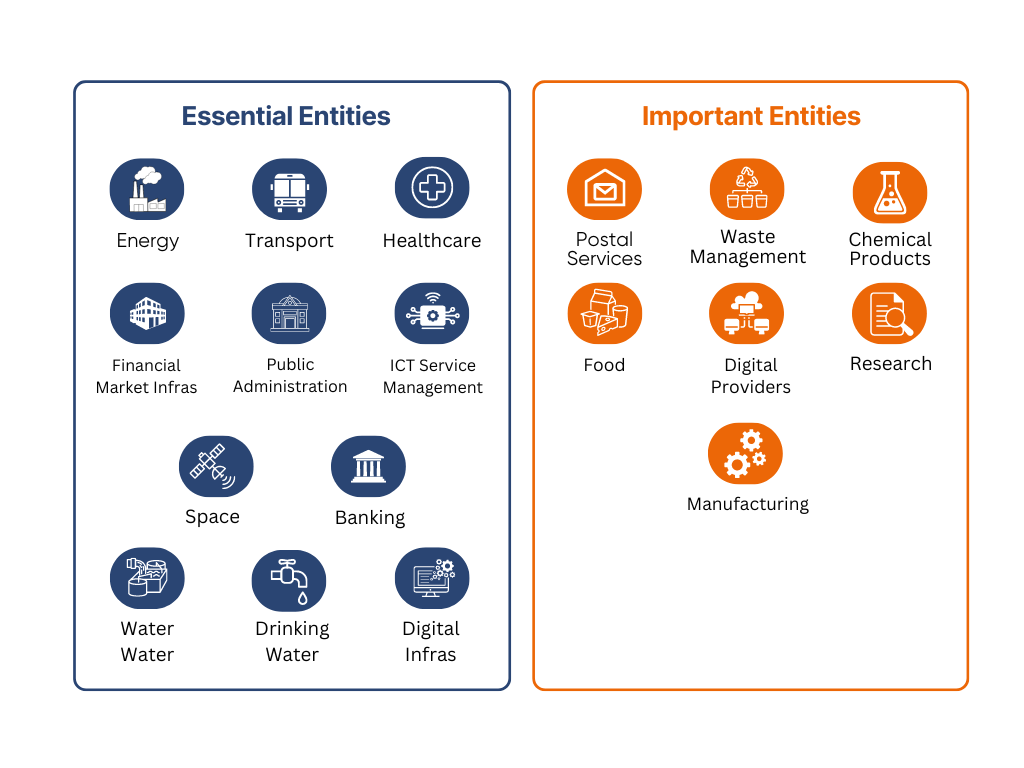Unravelling Directive NIS2 and Its Impact on European Businesses
Directive NIS2 represents a significant milestone in the evolution of cybersecurity regulations within the European Union. With the ongoing increase in cyber threats facing both critical infrastructures and essential organizations, the need for stricter and more coherent regulation in the cybersecurity domain has become more apparent than ever. Succeeding the original NIS Directive, NIS2 aims to address the deficiencies and challenges that arose during the implementation of the initial regulations and adapt to the changing landscape of cybersecurity.
Evolution of Cybersecurity from the Directive: From NIS to NIS2
The first NIS Directive (NIS 1148) was established in 2016, marking a step forward in unifying cybersecurity efforts in the EU. However, its implementation revealed several difficulties, including inconsistency in cybersecurity efforts among Member States. This scenario led the European Commission to propose Directive NIS2, which was officially adopted on January 16, 2023. Member States have until October 2024 to transpose NIS2 measures into their national legislation, with the obligation to comply with this directive by October 17, 2024.
Key Changes of Directive NIS2
Directive NIS2 introduces significant changes in four key areas:
- Risk Management and Security Measures: Stricter requirements are imposed for control measures to be based on detailed risk assessments, ensuring that organizations take a proactive approach in identifying and mitigating cyber risks.
- Notification Obligations: The directive establishes uniform requirements regarding the timing and recipients of cyber incident notifications, aiming to improve the speed and efficiency of incident response.
- Management Commitment: NIS2 places particular emphasis on the responsibility of business leaders in preventing and managing cyber incidents, who could be held directly accountable for security breaches.
- Supervision, Enforcement, and Penalties: Like the GDPR, NIS2 allows for the imposition of significant fines for non-compliance, with penalties reaching up to €10 million or 2% of annual turnover for essential entities, and up to €7 million for important entities.
Affected Organizations: Who’s in the Crosshairs of NIS2?
NIS2 classifies organizations as “Essential Entities” and “Important Entities“, expanding regulation beyond critical infrastructures. This encompasses a variety of sectors and services crucial to the EU’s economy and society.

It includes all public and private entities fundamental to the economy and society, as well as those with over 250 employees and an annual turnover exceeding €50 million. It also covers those with 50 to 250 employees and an annual turnover of at least €10 million.
There are exceptions to the size rule, such as providers of electronic communications networks or services, domain name registries or DNS service providers, and sole providers in a Member State of an essential service. Additionally, entities whose service disruption could have a significant impact on public safety, public security, or public health, as well as entities in the public administration, are considered within this category.
Risk Management and Security Measures
Directive NIS2 raises the bar regarding risk management and security measures that organizations must adopt within the European Union. This comprehensive approach not only seeks to protect individual organizations’ infrastructures but also to strengthen the resilience of European society and economy against cyber threats. Below are the key components of this approach:
- Minimum Set of Security Measures
- Risk Assessments and Information System Security Policies
- Security Procedures for Employees with Access to Sensitive or Important Data
- Use of Multi-Factor Authentication
- Incident Management for Prevention, Detection, and Response to Cyber Incidents
- Business Continuity and Crisis Management
- Testing and Auditing of Security Measures
- Supply Chain Security
- Cybersecurity Training
So, Is Your Company Bound by NIS2 Regulations?
Directive NIS2 represents a significant advancement in cybersecurity within the European Union, addressing growing challenges in an increasingly complex digital environment. With clear criteria and stricter requirements, this regulation not only strengthens the protection of critical infrastructures and essential organizations but also promotes a more robust and aware cybersecurity culture throughout the region. With the implementation deadline in October 2024, both Member States and affected entities must act promptly to adapt to these new regulations and ensure a safer digital environment for all.
Have you already found out if your company falls within the scope of NIS2?

